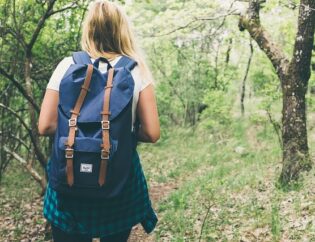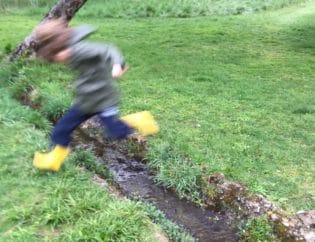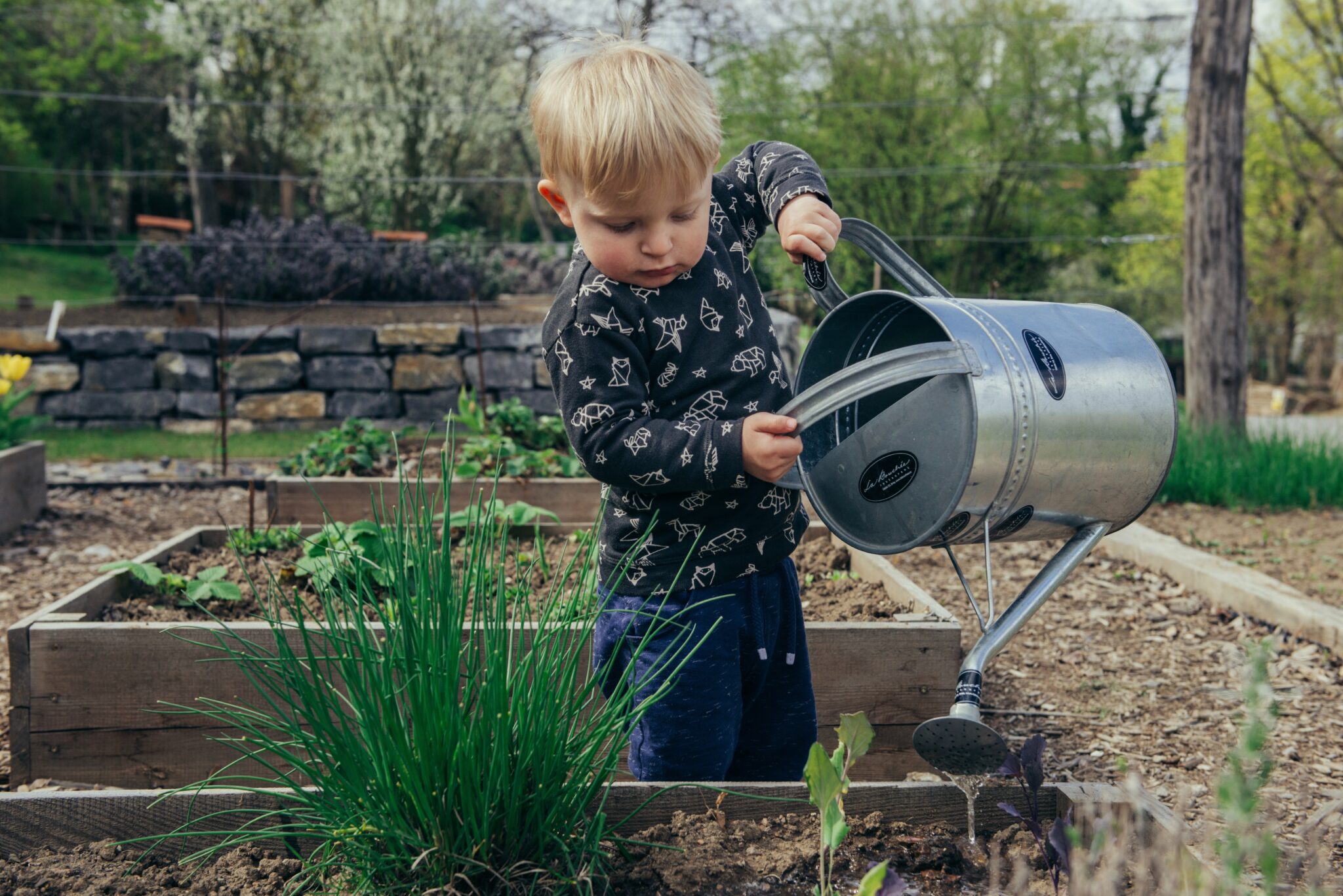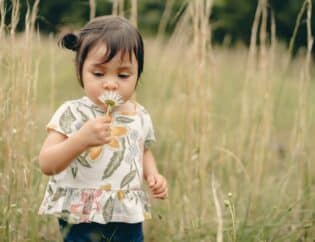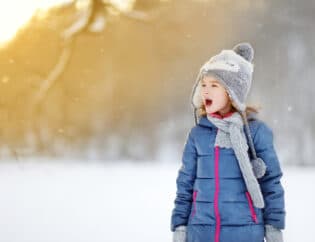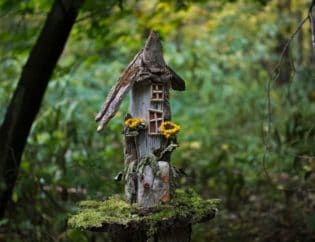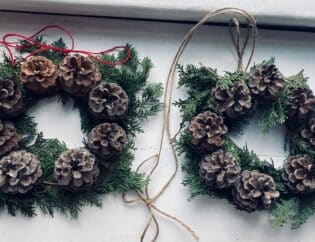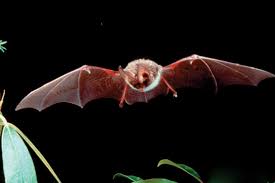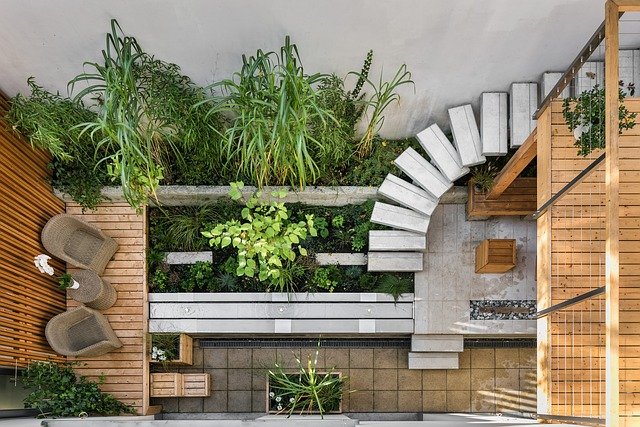
If you live in an urban area, you know that outdoor space can be hard to come by. Your family may have felt this, especially during the pandemic, with outdoor space at a premium.
While it would be lovely to have a backyard that you can turn into your child’s personal natural playground, you can still bring nature play home. Whether you have a tiny backyard, cute balcony, small terrace, mini porch or just a windowsill, there are always ways to bring nature in. You just have to be a little more creative about it.
Nature play is a child-led play that gets children active or thinking actively outdoors. While a tiny space likely can't offer many physical benefits, an enticing outdoor play space in your backyard, patio, or balcony can still offer mental health benefits such as enhanced creativity, focus, and social skills. And nature play also helps develop the ability of kids to play without the need for parental or adult control. Nice bonus!
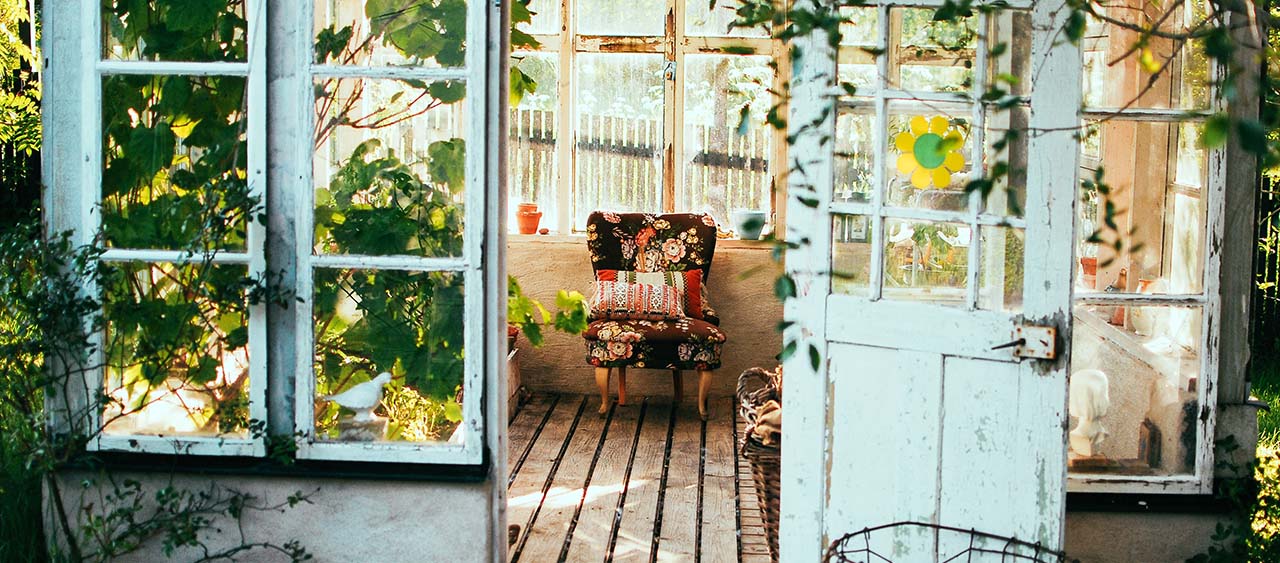
So how do you bring the wonders of nature play to a small outdoor space? Our advice is to start with a conversation with the whole family. If they are involved in the planning process, children will be more excited for the whole process and will hopefully even help with the transformation. Ask them what they envision for the space. This might be a tough conversation. We understand. Space is a premium in a city. Your limited outdoor space might be the perfect spot for al fresco dining, an outdoor reading nook for your daughter or perfect your son’s bike storage. But using it for some smart nature play activities can be enjoyable for the whole family, and beautiful too! Remind them that this should be a space where you can all enjoy nature.
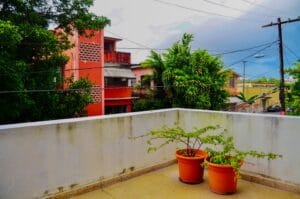
To help you choose the goal for your outdoor space, think about a theme such as nature art, mud play, or star gazing. If your space is very tiny, you might only be able to focus on one or two nature-based activities. After taking inventory of the items you already have, the interests of your family, and your space, your theme might just naturally spring to the surface. If you need some inspiration to get ideas flowing, we've gathered a few ideas here.
Set up a telescope, some cushions for the floor, flashlights, and guide books on the constellations and planets and make it your night sky viewing station. You can get very creative here with decor such as star lights in the ceiling and constellation-themed artwork.
Gardening is a popular theme for small spaces. There are so many creative ways to garden in small spaces. Check out Pinterest for some really amazing ideas such as gardens suspended from the wall or over the balcony railing. And, just as can create one indoors, you can certainly set up a tiny, container garden in your outdoor space. To make it fun and active for kids, make sure you set up a fun gardening station with kid-sized tools, watering can, dirt, seeds, etc.
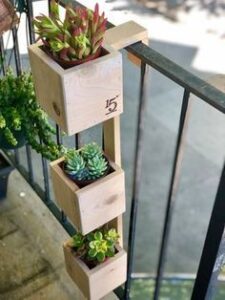
Sensory gardens are simple to create even in limited places. Herbs are well suited to growing in pots with less-than-ideal sunlight exposure. Try planting herbs along with textural plants like fine grasses, mosses, or lamb’s ears. Arrange the pots near a gathering place and at a child’s height, as this will enable sensory exploration and enjoyment.
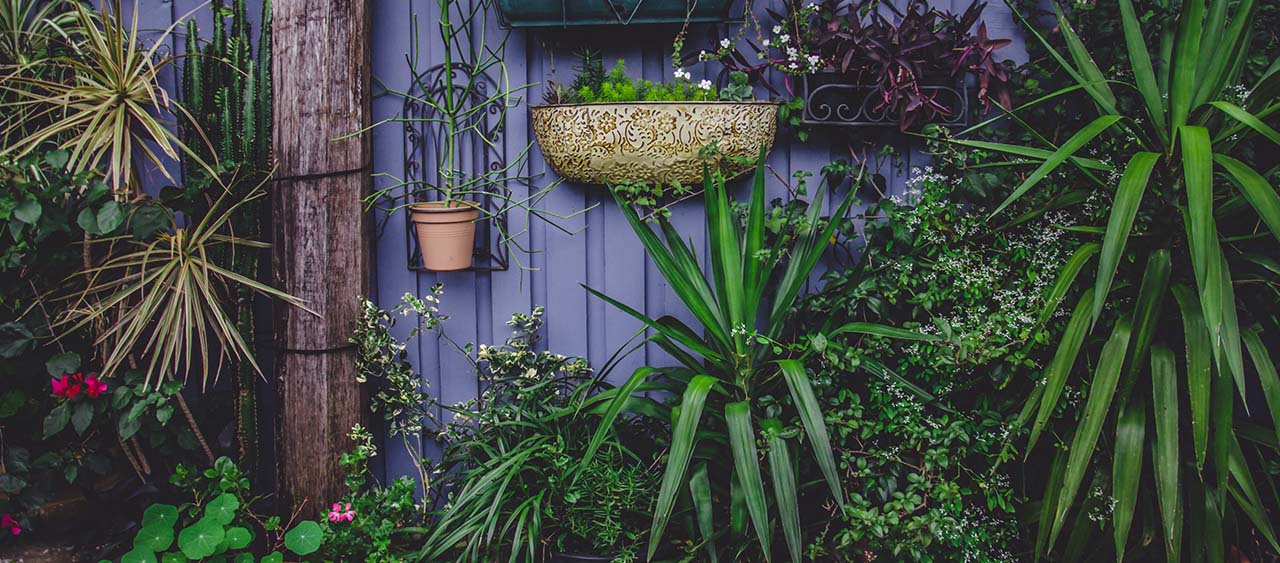
Smaller spaces are excellent as observation sites for new birders. Install a bird-safe window feeder or put out feeders a safe distance away outside your space where you can enjoy the activity from afar. Store binoculars and a spotting scope closeby with your favorite bird ID guidebooks. If there is the appropriate amount of space, think about adding a birdhouse, or maybe even a butterfly house to your space.
Fairy houses and villages are magical creations that stimulate creative, dramatic play in make-believe settings. Fairy villages can be any scale, created inside a hollow log, on top of a tree stump, in a planter, on a patio or in a miniature woodland in a quiet corner of the backyard. Your child can make decorating and enhancing the fairy house or village part of their regular time outside, and you’ll be amazed at how creative and dedicated they are to finding the right feature— scavenging mission to gather building materials: sticks for lincoln-log acorns for decor, dry grasses for coverage, pebbles for pathways, feathers for beds, pine cones for furniture.
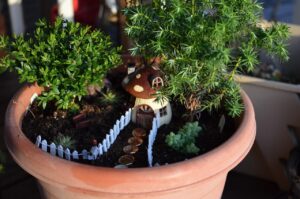
Nature art or en plein air is a wonderful way to capture the beauty of nature and stimulate your child’s creativity. And the outdoors offers unlimited beautiful subjects changing all of the time! Put up an easel and keep a bench or small table stocked with supplies like paper, paints, charcoal, pastels. Make sure you think about waterproofing if your space is exposed to the elements. And just imagine how easy clean up will be! And don’t forget about ephemeral art. Keep an assortment of supplies such as leaves, needles, sticks, some paint, twine, and workspaces for making gorgeous natural ephemeral art.
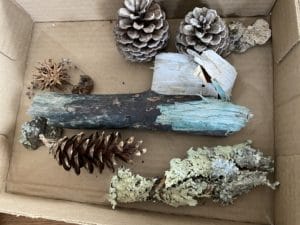
Kids will have a blast with an assortment of loose parts to play around with. Stock your space with baskets of pine cones, leaves, stones, twigs, and piles of sticks . Kids will love building mini forts, bridges or houses. Construction using loose parts can happen in a small space and are perfect for recycling the parts for the next project. Even fort building can happen on a balcony if you have the right space.
Keep a spot prepped for messy play such as mud play and sand play. Remember that mud and dirt are good for kids— the germs they contain are great to build up little immune systems. Plus, mud is an amazing sensory experience for kids, and with Sensory Processing Disorder on the rise, our kids really need to squish their fingers through mud sometimes! You can set up mud play in a small space if you plan well with buckets and floor covering. If limited to a small patio or deck, try filling a large tub or bucket with soil and adding a few scooping/digging tools. You can use a wide container set on a bench for portable sand table or a larger container set on the ground could be big enough for little ones to sit inside. Mix in a little water and scoops and it’s like a day at the beach, all on your own patio.
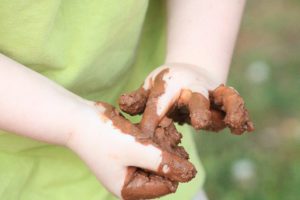
Whatever your family decides on for the theme of their tiny outdoor nature space, remember that themes, like nature, are flexible. You can change your theme seasonally, monthly or whatever suits you. Think of your small outdoor space like you would an art show, or a classroom, adjusting the theme regularly, perhaps with the season or time of the year.
Don't forget about seating but keep it flexible with moveable seating such as wood stumps, tree cookies, or natural objects that are moveable and adaptable for the activity.
What a gift to have an extra space that you can devote to exploring nature. Doesn’t this sound better than bike storage?


